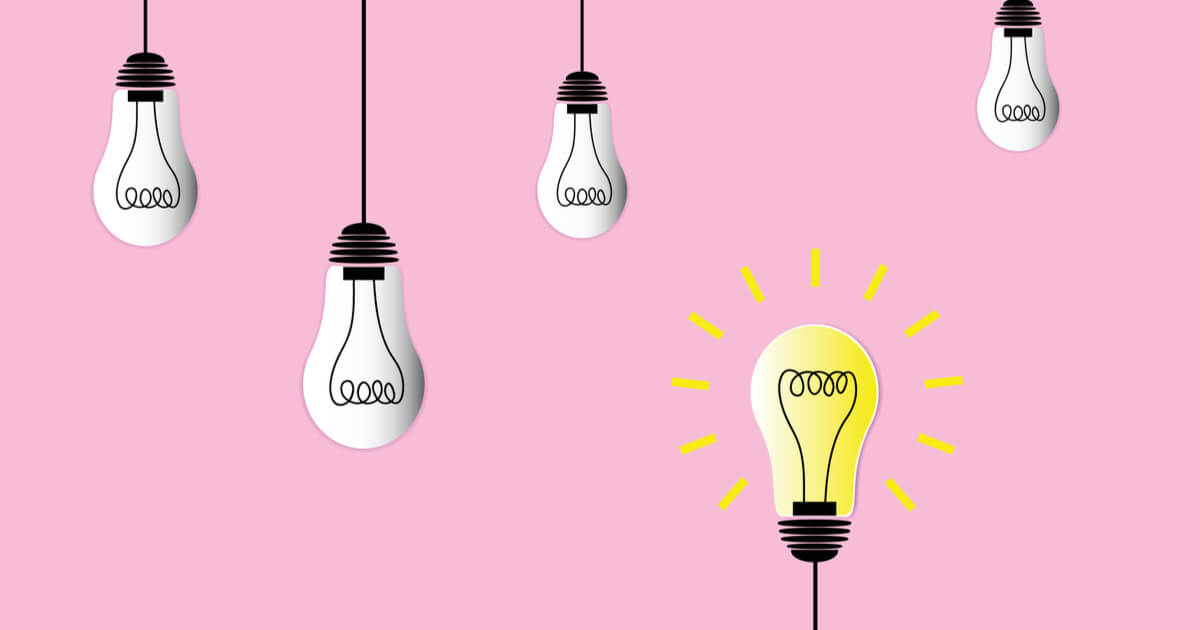October 26, 2023
L'année dernière, il y a eu plus de 2,14 milliards de consommateurs en ligne. Ce nombre va continuer d'augmenter, car de plus en plus de personnes privilégient l'e-commerce pour faire leurs achats. Bien que l'engouement pour l'e-commerce ne date pas d'hier, si vous n'avez pas optimisé vos pages produits depuis un certain temps, notamment pour le SEO, il vous sera difficile de toucher de nouveaux consommateurs et de booster vos ventes.
Il suffit de quelques changements pour optimiser la page produit de votre marque ou distributeur, et transformer votre boutique en ligne afin d'attirer les consommateurs. Nous allons aborder les points suivants :
- What is an optimized product page?
- How to optimize product pages for what you sell
- How to optimize product pages for higher conversions
- Examples of high converting product pages
- How to optimize product pages for higher search ranking
- Take your product pages to the next level
Qu'est-ce qu'une page produit optimisée ?
Vous savez qu'une page produit est une page Web qui décrit un produit ou un service spécifique. Mais qu'entendons-nous par « page produit optimisée » ? Traditionnellement, il s'agit d'une page produit conçue pour générer des taux de conversion plus élevés et/ou pour améliorer l'optimisation du référencement naturel (SEO). Mais idéalement, c'est avant tout une page qui répond aux besoins des consommateurs et permet à votre entreprise d'atteindre ses objectifs.
Pensez à la dernière fois où vous avez acheté un produit en ligne. Quelles sont les informations qui vous ont été nécessaires sur la page produit avant de vous décider à passer commande ? Uniquement les spécifications ? La réponse est non. Vous avez probablement eu besoin de beaucoup d'informations différentes pour vous décider à acheter en toute confiance.
Voici ce que la plupart des consommateurs veulent savoir :
- Ce produit est-il de bonne qualité ou offre-t-il un bon rapport qualité-prix ?
- Peut-on faire ses achats sur ce site en toute sécurité ?
- Que pensent les autres consommateurs de ce produit ?
- Ai-je besoin d'acheter un autre article pour que ce produit fonctionne ?
- Comment les autres consommateurs utilisent-ils ce produit ?
Seulement 2 % des visites sur des sites e-commerce se concluent par un achat. À l'évidence, les e-commerçants peuvent mieux faire pour fournir des informations et expériences qui répondent aux besoins des consommateurs.
Comment optimiser les pages produits de ce que vous vendez ?
Que faut-il donc inclure sur les pages produits ? Le type de produit que vous vendez peut influer sur les informations les plus importantes à inclure.
Par exemple, si vous vendez des produits électroniques, les spécifications techniques et une section de questions-réponses sont très importantes pour les consommateurs potentiels. D'après notre Shopper Experience Index, les pages produits comportant une section questions-réponses enregistrent un taux de conversion 447 % plus élevé que celles qui n'en ont pas, indépendamment de l'engagement des consommateurs.
Quantitatif ou qualitatif ?
De manière générale, les consommateurs se posent deux types de questions : quantitatives et qualitatives.
Quantitative questions are product-specific questions centered around features, like “How many HDMI ports does this TV have?”. These questions focus on the hard specs of a product or service. Qualitative questions focus on subjective product details and opinions like, “What do you think of the picture quality on this TV?”. With these questions, shoppers try to either validate or discredit their own opinions by learning from someone who has already used the product.
Votre page est particulièrement efficace si vous pouvez répondre à ces deux types de questions. La combinaison des caractéristiques concrètes et des anecdotes de consommateurs permet de réduire rapidement les incertitudes concernant votre produit.
Lorsque la marque de produits de beauté Burt's Bees a décidé de lancer une nouvelle catégorie de produits de maquillage naturel de haute qualité à petit prix, elle savait que ses pages produits devaient être optimisées.
En se basant sur les insights issus des contenus générés par les utilisateurs (CGU), comme les notes et les avis, la marque a identifié la nécessité d'ajouter à ses pages produits un outil pour déterminer son teint de peau, afin que les consommateurs puissent plus facilement choisir un produit leur correspondant.
Elle a également optimisé ses pages produits en ajoutant des images produits plus grandes et en affichant les notes par étoile plus haut sur la page pour augmenter la visibilité des avis des consommateurs. En six mois, les cosmétiques représentaient 21 % des ventes totales sur le site de la marque.
En fonction du produit ou service que vous proposez, voici quelques-uns des objectifs à privilégier pour vos pages produits afin d'augmenter le taux de conversion :
- Faciliter l'achat du produit
- Rendre le produit aussi beau que possible
- Démontrer clairement les avantages du produit
- Utiliser les avis des consommateurs pour influencer les autres grâce aux CGU
- Faire en sorte que les consommateurs aient l'impression de bénéficier d'un bon prix
Comment optimiser les pages produits pour augmenter le taux de conversion ?
Il existe plusieurs façons d'optimiser rapidement et facilement les pages produits pour augmenter le taux de conversion. Voici les six que nous préférons :
1. Rédigez des descriptions de produit claires et attrayantes
Vos descriptions de produit doivent être faciles à synthétiser, en particulier car la plupart des consommateurs font leurs achats depuis un appareil mobile. D'ici 2025, les ventes en ligne réalisées depuis des appareils mobiles représenteront 44 % des ventes en ligne des acteurs de la distribution aux États-Unis.
De plus, il est important que vous ne vous contentiez pas de la description du produit. Expliquez aux consommateurs les avantages de celui-ci. Consultez les avis pour repérer les différentes façons dont les consommateurs ont utilisé concrètement vos produits et intégrez des formulations et des exemples d'utilisation courants dans vos pages produits. (Avantage bonus : cela améliore également votre stratégie de mots-clés, ce qui vous garantit un meilleur référencement dans les moteurs de recherche.)
2. Donnez une place centrale à la preuve sociale
Une enquête a révélé que 49 % des gens font autant confiance aux avis de consommateurs qu'aux recommandations de leurs amis et de leur famille. Stimulez votre taux de conversion et vérifiez que votre produit répond aux besoins des consommateurs en plaçant la note par étoile et le nombre d'avis sur le produit en haut de la page, juste à côté du nom du produit.
Une entreprise en particulier a contribué à habituer les consommateurs à voir les avis instantanément : Amazon. Le site affiche les avis bien en évidence pour aider les consommateurs à filtrer les millions de produits disponibles. Environ 57 % des shoppers Amazon considèrent les avis sur le site comme un élément important à prendre en compte pour leurs achats.
Best Buy est un autre bon exemple : le site affiche les notes par étoile et le nombre d'avis en haut de ses pages produits pour aider les consommateurs à prendre leurs décisions d'achat en toute confiance. Sur cette annonce pour un iPad, les consommateurs peuvent voir que plus de 3 400 shoppers ont évalué le produit et que sa note moyenne est de 4,8 étoiles. Le fait de voir immédiatement un ressenti des consommateurs global positif enlève certaines inquiétudes liées à l'achat d'un article coûteux.
3. Répondez aux avis négatifs et réagissez proactivement aux ruptures de stock de produits
Les consommateurs ne sont pas gênés si votre produit compte quelques avis négatifs. En réalité, nous avons constaté que les produits avec un ou plusieurs avis négatifs sont perçus comme plus authentiques et ont des taux de conversion plus élevés que ceux avec une note parfaite de 5 étoiles et aucun avis négatif. En outre, la propension d'un consommateur à acheter un produit qui a reçu un avis négatif est multipliée par deux si cet avis a fait l'objet d'une réponse de la marque.
Les meilleurs distributeurs e-commerce utilisent les avis négatifs comme une chance de répondre aux raisons qui pourraient dissuader d'un achat, d'interagir avec les consommateurs et d'identifier comment améliorer la page produit.
Par exemple, plusieurs consommateurs peuvent laisser un avis indiquant qu'un pantalon qu'ils ont commandé dans leur taille habituelle est trop grand. Cet avis négatif peut permettre à votre marque de mettre à jour la description de ce produit afin d'inclure des formulations utiles comme : « Pour un ajustement parfait, de nombreux consommateurs recommandent de choisir la taille en dessous. »
Cela permet aux consommateurs de sentir qu'ils prennent de meilleures décisions d'achat et d'éviter les futurs avis négatifs liés à la précision des descriptions des produits.
4. Permettez aux consommateurs de filtrer les avis selon leurs besoins
Bénéficier d'une expérience utilisateur personnalisée est important. Vous devez donc permettre aux consommateurs de trouver facilement les informations les plus pertinentes pour eux. Cet aspect est tout particulièrement important pour les marques de vêtements, car les consommateurs ne peuvent pas essayer les vêtements à travers leur écran. Ils doivent donc se fier aux avis d'autres consommateurs ayant des morphologies similaires.
Les maillots de bain sont connus pour être particulièrement difficiles à acheter en ligne, mais la marque de maillots de bain Andie permet aux consommateurs de filtrer facilement les avis afin qu'ils aient plus confiance en ce qu'ils achètent.
Les consommateurs peuvent filtrer les avis par taille et par morphologie. Ils peuvent également utiliser la fonction de recherche pour trouver leur taille ou tout autre terme qui s'applique à leur morphologie, comme « épaules larges », afin de trouver le bon maillot.
5. Privilégiez les images produits de bonne qualité et les contenus visuels provenant des réseaux sociaux
High-quality brand imagery is vital to showcase how amazing your product is and what features it offers. But, visual content from customers gives shoppers a better understanding of how other people use your product. This is especially important in industries like beauty, apparel, and home goods because shoppers need to be able to visualize how this product will fit into their real lives, and brand imagery can’t always do that for them.
About 56% of consumers say the types of content they most want to see from brands are user-generated photos and videos, and 62% of consumers are more likely to buy if they can view images/videos from previous customers.
Vous pouvez trouver des images intéressantes et authentiques sur les réseaux sociaux. Syndiquez les images que les consommateurs publient de vos produits sur les réseaux sociaux vers vos pages produits pour augmenter vos ventes. Si vous ne trouvez pas beaucoup de photos de vos produits sur les réseaux sociaux, lancez une campagne de hashtag sur Instagram et Twitter pour collecter facilement des photos de consommateurs.
6. Assurez-vous que vos politiques d'expédition et de retour sont claires
Tout ce qui peut inspirer confiance aux consommateurs doit être une priorité pour l'optimisation de vos pages produits. Les consommateurs ne peuvent pas voir, toucher ou sentir vos produits lorsqu'ils font leurs achats en ligne. Ils prennent un risque en achetant chez vous et se sentiront plus sereins si ce risque est minimisé. C'est pourquoi votre politique de retour est très importante. Environ 50 % des consommateurs consultent la politique de retour d'un vendeur avant d'acheter.
Si vous proposez la livraison et les retours gratuits, assurez-vous de l'indiquer clairement. Si ce n'est pas le cas, soyez transparent sur les termes de votre politique et sur ce qui est remboursé au consommateur un fois le retour effectué. Obtient-il un bon d'achat en magasin ? Doit-il payer des frais de reprise ?
Vous n'êtes pas obligé de proposer les retours gratuits, mais vous ne voulez pas non plus que vos consommateurs se sentent lésés s'ils ne récupèrent pas le montant total qu'ils ont dépensé.
4 exemples de pages produits qui génèrent un fort taux de conversion
Voici quelques-uns de nos exemples préférés de pages produits qui accroissent le taux de conversion.
1. Burt's Bees
Nous avons précédemment évoqué l'utilisation par Burt's Bees d'un outil pour déterminer son teint de peau afin d'aider les consommateurs à choisir plus facilement le produit qui leur correspond. Voyons maintenant comment sa stratégie de conversion s'étend à ses pages produits de soin de la peau.
Pourquoi la stratégie fonctionne :
- La note moyenne par étoile et le nombre d'avis en haut de la page prouvent que ce produit est très apprécié.
- Les grandes images insistent encore davantage sur la preuve sociale en mettant en avant une note par étoile et une citation d'un avis rédigé par un consommateur réel.
- Des instructions complètent la description de produit et aident les consommateurs à comprendre ce qu'est exactement le produit et comment il s'intègre à leur routine de soin de la peau existante.
2. Neutrogena
Les cosmétiques sont une catégorie de produits qui nécessite des pages produits très détaillées, car les consommateurs ne peuvent pas voir ou tester l'article en personne. Sur cette page produit du stick à lèvres MoistureSmooth Color Stick de Neutrogena, l'entreprise fait passer les CGU avant la description du produit.
Pourquoi la stratégie fonctionne :
- Un encart bien visible au milieu de la page présente une note par étoile et une citation d'un consommateur sur l'utilisation réelle du produit et sur son adaptation à sa texture de peau.
- La galerie d'images issues des réseaux sociaux et postées par des consommateurs réels fournit plus d'informations sur l'effet du produit.
- La galerie encourage les consommateurs à partager l'effet du produit sur eux en mentionnant Neutrogena sur Instagram ou Twitter pour apparaître sur leur site Web.
- La section « Avis les plus utiles » met en évidence un avis positif et un avis négatif que d'autres consommateurs ont trouvé utiles.
3. Nourison
L'achat d'un tapis en ligne peut s'avérer compliqué, car il est difficile pour les consommateurs d'imaginer à quoi il ressemblera une fois chez eux. La marque de tapis Nourison rassure les consommateurs en intégrant un grand nombre de CGU sur ses pages.
Pourquoi la stratégie fonctionne :
- Une galerie de photos issues des réseaux sociaux montre comment les consommateurs ont placé ce tapis chez eux.
- La marque encourage les futurs consommateurs à partager comment ils ont installé leur tapis chez eux en publiant une photo sur les réseaux sociaux avec le hashtag #Nourison.
- La note moyenne du produit et le nombre d'avis sont affichés tout en haut de la page pour indiquer que des centaines d'autres consommateurs ont acheté et apprécié ce tapis.
- L'entreprise utilise des descriptions de produits courtes mais détaillées, et inclut des spécifications qui indiquent aux consommateurs les meilleurs endroits pour placer ce tapis chez eux (zones avec plus ou moins de passage).
4. Under Armour
Notre dernier exemple est une page produit pour une chaussure Under Amour. La marque utilise plusieurs stratégies pour aider les consommateurs à choisir parmi les centaines de chaussures disponibles sur son site.
Pourquoi la stratégie fonctionne :
- Les consommateurs bénéficient d'une vue complète à 360 degrés de la chaussure qui leur permet de ne pas avoir de mauvaises surprises à la réception du produit.
- Les consommateurs peuvent filtrer les avis par note, par type d'athlète (occasionnel ou passionné), par taille et par région pour voir les avis qui sont plus personnalisés en fonction de leur utilisation de la chaussure.
- Lorsqu'un consommateur fait défiler la page, le bouton « Ajouter au panier » devient une bannière qui reste en haut de la page afin que les shoppers puissent rapidement placer l'article dans leur panier une fois leur décision prise.
Comment optimiser les pages produits pour la SEO
Vous avez consacré beaucoup de temps et de ressources à l'optimisation de vos pages produits pour augmenter le taux de conversion. Toutefois, cela ne sert à rien si les consommateurs ne parviennent pas à trouver vos pages produits avec les résultats des moteurs de recherche. C'est là que la SEO des pages produits entre en jeu.
La SEO des pages produits consiste à optimiser vos pages produits de sorte que leurs contenus soient trouvés par des moteurs de recherche tels que Google.
Optimisation du référencement naturel : les bases
Disposer de beaucoup de contenus sur votre page produit ne fera pas apparaître votre site comme par magie sur la première page de Google. Les algorithmes des moteurs de recherche donnent la priorité aux pages qui sont conviviales, les plus pertinentes pour la recherche effectuée, qui ont des correspondances de mots-clés, et qui incluent des informations de qualité.
Auparavant, un site pouvait apparaître en premier sur Google en plaçant des mots-clés spécifiques dans n'importe quelle partie de la page Web, même si cela n'avait pas vraiment de sens. Cette pratique est révolue depuis longtemps.
Aujourd'hui, Google se concentre sur la façon dont votre page correspond à ce qu'un utilisateur recherche. Ainsi, se concentrer sur les mots et phrases utilisés par les consommateurs pour parler de vos produits et des solutions qu'ils apportent est une excellente façon d'optimiser sa stratégie SEO.
Voici quelques-unes de nos façons préférées de placer naturellement des mots-clés :
- Incluez des mots-clés dans la balise de titre et la méta-description de votre page, et assurez-vous que le texte réel de la page correspond à ce que vous y annoncez.
- Utilisez les en-têtes pour diviser le texte et organiser votre page. Essayez d'inclure un mot-clé dans au moins un des titres, mais uniquement si cela a du sens.
- Placez des mots-clés à travers toute la page, par exemple dans les noms de produits, les descriptions et les avis.
- Incluez des mots-clés dans le texte alternatif d'une image s'ils s'insèrent naturellement dans le reste du texte.
- Ajoutez des liens internes vers tous autres contenus connexes sur votre site.
L'impact du temps de chargement des pages sur la SEO
En 2018, Google a lancé le Speed Update, conçu pour filtrer les sites Web lents à charger lors des recherches sur mobile, afin d'améliorer l'expérience utilisateur. Pour réduire les temps de chargement, assurez-vous que chaque image est correctement compressée et optimisée pour charger plus rapidement. Assurez-vous également que les plug-ins tiers que vous utilisez ne ralentissent pas votre site avec du code excessif (en particulier ceux de vos partenaires d'avis de consommateurs !).
Toutefois, la vitesse de chargement des pages n'est pas uniquement importante pour la SEO des pages produits. Elle améliore également l'expérience consommateur sur votre page. Presque 70 % des consommateurs déclarent que la vitesse de chargement d'une page a un impact sur leur motivation à acheter sur le site d'un distributeur en ligne.
Les avantages des CGU pour améliorer le SEO
Selon une étude réalisée par Bazaarvoice, environ 63 % des marques et des distributeurs considèrent les CGU (comme les notes et les avis des consommateurs) comme un facteur clé du SEO. Huit avis sur une page peuvent suffire à augmenter significativement le trafic naturel. Les contenus nouveaux et actualisés sont un élément clé des critères de classement de Google. Disposer de nombreux avis mis à jour en permanence est l'une des meilleures façons d'optimiser le SEO de vos pages produits.

En outre, les consommateurs qui rédigent des avis intègrent généralement des mots-clés de longue traîne qui ont beaucoup de valeur. Lorsque quelqu'un recherche les mêmes termes que ceux présents dans les avis produits, les pages produits associées apparaissent dans les résultats de recherche. Le taux de clics sur les mots-clés de longue traîne est 3 à 6 % supérieur à celui des recherches plus générales. Ces mots permettent également plus facilement de se classer dans les recherches que les mots-clés plus courts.
Attention : le simple fait d'avoir des avis sur sa page ne suffit pas. Google doit pouvoir analyser tout ce contenu (sans quoi il n'existe pas).
Et n'oubliez pas : l'optimisation des pages produits pour le SEO grâce au contenu des avis des consommateurs ne sert pas qu'à vous classer plus haut dans les résultats Google et à obtenir plus de visites sur votre site. L'objectif principal est de créer une meilleure expérience utilisateur et de fournir aux consommateurs les informations et les visuels exacts dont ils ont besoin pour acheter en toute confiance.
Learn more about the SEO value reviews can bring to your product pages.
Améliorez vos pages produits
Optimiser vos pages produits peut sembler fastidieux, mais cela en vaut vraiment la peine. Si les consommateurs disposent de toutes les informations dont ils ont besoin pour conclure leur achat, vous vous démarquerez de vos concurrents et augmenterez considérablement vos taux de conversion.
Ready to optimize your product pages with ratings and reviews? Learn more about Bazaarvoice Ratings & Reviews and start leveraging authentic customer opinions, photos, and videos to sell your products.

You can check out the rest of our Long Read content here for more marketing strategies, tips, and insights.




